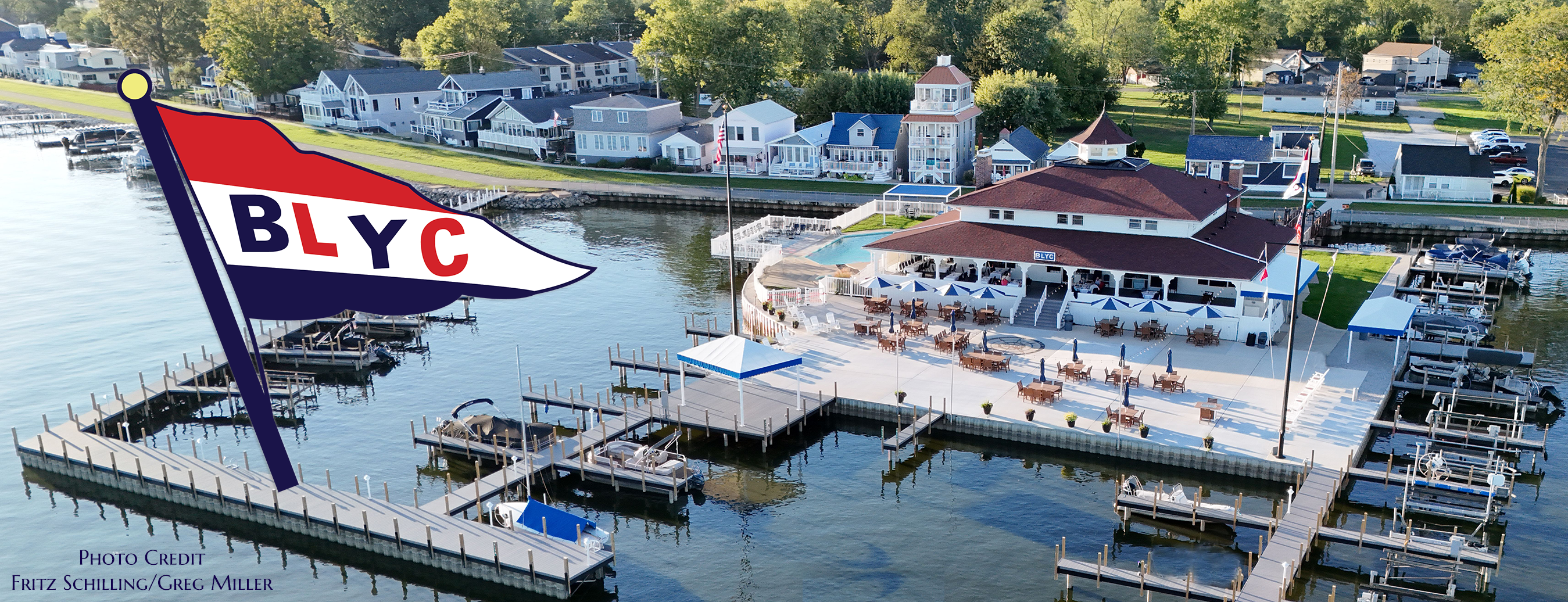Commodore Steve Harris – March, 2013
On the morning of May 6, 1906 about sixty members and prospects met on Orchard Island for the first meeting of what was to become the Buckeye Lake Yacht Club. Although instantly popular, the one thing the new club was definitely missing was a home. Within a year, the club had taken over the lease of “Sunken Island” and formed the Buckeye Lake Building Company, a not-for-profit corporation separate from the Club itself. In 1907, they published plans for BLYC’s new clubhouse. It was to be a rustic two-story structure featuring steep gabled roofs, a high tower crowned with a lookout balcony, a great hall featuring a fieldstone fireplace, a dining wing, and almost every amenity one might expect in a “yachting club”… but it was too expensive. Instead, they built a modest, small two-story addition to the existing boathouses on the eastside of the island. Completed in 1907, that “clubhouse,” however, is now gone.
As membership grew, so did discussions regarding the need to construct a “real” clubhouse. Plans were published on February 29, 1912 in The Ohio State Journal and presented to Club members at the 7th Annual “Tar Social” that same evening. The Board of Governors approved the idea, but raising the needed funds would be a challenge. Compounding the funding concerns was the fact that the Buckeye Lake Building Company, not the Club, was in control of “Sunken Island” (now renamed Watkins Island). The Club itself only owned 163 of the 535 issued shares in the company. But, at the annual meeting of the Building Company, fortune smiled on BLYC. At that meeting, there were only 321 shares represented in person or by proxy. By the narrowest of margins, BLYC controlled the meeting.
The Building Company approved the construction of the new clubhouse with the agreement that BLYC would purchase the remaining 465 un-issued shares in the company, pay annual rent of $800.00, and, upon completion of the clubhouse, be responsible for any and all repairs or alterations thereto. Later that year, at a projected cost of $5,000, construction began.
The Club was quite fortunate as several of its officers and members were not only also on the Building Company’s board, but had professions which were of considerable benefit in the construction of the clubhouse. Commodore Harry Freeman was a well-known real estate developer; Governor Walter Whitacre, a noted lumber dealer; former Governor John MacLean, a manufacturer of fine millwork; and, Harry Holbrook, a well-known Columbus architect who not only designed the clubhouse, but also supervised its construction.
The clubhouse was essentially completed by February, 1913. On February 22, a group of club members assembled, donned overalls and finished construction of the interior walls of the second story. This original structure existed much as it does today, although the dining room, kitchen, and Commodores’ Lounge were added later. The back of the fireplace, now in the dining room, was originally on the exterior. This “new” clubhouse was formally dedicated on Sunday, May 4, 1913 at the Club’s semi-annual meeting – the first event held within its walls.
Over the years, retiring the debt continued to be a problem for the Club – World War, the 1928 tornado, and the Great Depression all had significant impact. However, as Comm. Kyle Armstrong discusses in his book, The Story of the Buckeye Lake Yacht Club, BLYC was fortunate to have Commodore Edgar T. Wolfe (1934) as an active, loyal member and true benefactor of BLYC. Over the years, Commodore Wolfe acquired much of the Club’s debt and, annually at the start of each term, would join the new Commodore by the fireplace to dispose of some of the outstanding shares – the last being burned in the fall of 1938. On November 28, 1938 the Buckeye Lake Building Company was dissolved and its assets and liabilities officially turned over to the Club. A quarter of a century after its construction, BLYC finally owned its clubhouse.
On Saturday, May 4, 2013, on the 100th Anniversary of the original dedication, the Club will hold a ceremony to celebrate this fine facility that has served BLYC and its members so well for all these years and dedicate it anew to hopefully serve us one hundred more.
Parts of this article were either paraphrased or taken directly from Commodore Armstrong’s The Story of the Buckeye Lake Yacht Club and Commodore Frank Foster’s “History of the BLYC Clubhouse.” I would like to express my sincere gratitude for their efforts in preserving our Club’s history – making this and many other articles possible. – SGH
